Nurses Should Advocate for Better Safety Standards for Hazardous Drugs
A lot of attention is given to the long-term effects of chemotherapy seen in patients with cancer, but handling chemotherapy and other hazardous drugs can also cause acute or chronic effects in nurses or other healthcare providers, and they may be exposed to these hazardous drugs more often than they realize.
In a 2013 study, Hon et al tested 229 frequently contacted surfaces within a hospital medication system and found that 36% of samples taken were positive for the presence of cyclophosphamide.[1] The study found contamination in a variety of places, including on a computer mouse and elevator buttons. A second study by Hon et al published in 2014 took 225 hand wipe samples and found that one in five samples were positive for cyclophosphamide.[2]
“I think if we looked at these drugs as bags of Ebola instead of bags of drugs, we might think about how we handle them a little differently,” said Seth Eisenberg, RN, ASN, OCN, BMTCN, a professional practice coordinator, infusion services at Seattle Cancer Care Alliance.
At the Oncology Nursing Society (ONS) 41st Annual Congress held April 28 to May 1 in San Antonio, Texas, Eisenberg and AnnMarie Walton, PhD, MPH, RN, OCN, CHES, a postdoctoral fellow at University of North Carolina at Chapel Hill School of Nursing, gave a presentation designed to provide oncology nurses with more knowledge about handling hazardous drugs, as well as inspiration on how to make changes in the work environment or in the state where they practice.
Current Guidelines
Controlling exposure to occupational hazards is a fundamental part of protecting healthcare workers, according to the National Institute for Occupational Safety and Health (NIOSH). Eisenberg discussed a hierarchy of controls used by NIOSH to determine how to implement control solutions. Level 1 controls, or those considered to be the most effective, involve elimination or substitution of the hazard, something that is not possible in the case of chemotherapy. Level 2 controls are engineering controls. Level 3 controls are administrative controls, such as policies and procedures on how to do things properly, and Level 4 controls involve personal protective equipment (PPE).
Currently, oncology nurses have the most control over their use of PPE, according to Eisenberg. Current recommendations call for double gloving with American Society of Testing and Materials–tested chemotherapy gloves, wearing chemotherapy-resistant gowns during all stages of drug handling, and using a closed system transfer device (CSTD) for compounding and administration.In addition, guidelines call for the use of a Biologic Safety Cabinet when cutting or crushing oral hazardous drugs, making spill kits available, and training all personnel in hazardous drug handling.
However, Eisenberg pointed out that NIOSH is a research arm of the Centers for Disease Control & Prevention (CDC) and does not have an enforcement capability, and the Occupational Safety and Health Administration (OSHA) does not have the resources available for enforcement.
Newer to the hazardous drug handling arena is the United States Pharmacopeial Convention (USP), a pharmacy-based quality organization, who has published standards for hazardous drug handling, from delivery to the hospital through administration and disposal in its General Chapter <800>. According to Eisenberg, this organization is now dictating safe handling practices to oncology nurses.
“I think this is good news because unlike NIOSH, who can’t do anything about this problem, the USP <800> is being enforced,” Eisenberg said.
The USP <800> requires the use of double gloves and chemotherapy-resistant gowns. It also requires spill training and the use of appropriate respiratory protection for drugs that vaporize at room temperature. In addition, the use of a CSTD will be required for administration.
Continue Reading on Cancer Network
